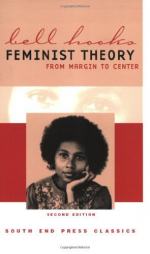
|
| Name: _________________________ | Period: ___________________ |
This test consists of 15 multiple choice questions and 5 short answer questions.
Multiple Choice Questions
1. According to the title of Chapter Nine, what is one of the primary goals of the feminist movement?
(a) To legalize prostitution.
(b) To create a government department overseeing women's issues.
(c) To end violence, especially against women.
(d) To develop a new rating system for DVDs and video games.
2. On what levels of culture and society is violence most likely to exist?
(a) Mostly on the interpersonal level.
(b) The author does not make a statement one way or the other.
(c) Mostly between countries at war.
(d) On all levels: family, community, government, international relations, etc.
3. Which one of the following is true of the author beliefs about child care centers?
(a) They should be staffed by workers of both genders.
(b) They should be run with discipline and order.
(c) They should not provide food for the children's lunches.
(d) They should be run exclusively by women.
4. What group of women are left out but really stand to benefit more from feminist thought?
(a) Housewives.
(b) Illiterate women.
(c) Middle class women.
(d) College women.
5. How should feminists behave towards consumerism, according to the author?
(a) Buy only what is necessary and thus resist capitalist culture and its connection to sexual oppression.
(b) They can accept it as a necessary evil.
(c) They should learn aggressive marketing tactics.
(d) They should focus on more important things.
6. Related to the issue of feminist writing, between which two groups does the author notice tension in the greater feminist movement?
(a) The tension between younger and older women.
(b) The tension between those who write and discuss theories and ideas and those who engage in direct activism to support the feminist movement.
(c) The tension between those who are idealistic and those who are practical.
(d) The tension between those who advocate scientific analysis and those advocating political manifestos.
7. What will happen if people follow the course of action regarding beliefs about motherhood proposed by the author?
(a) It will expose others to non-western cultural perspectives.
(b) It will help new mothers to carry on traditions.
(c) It will help to eliminate systemic sexism.
(d) It will help children learn about motherhood.
8. What was the early feminist belief about creating change according to the author?
(a) It would happen once women took over the media.
(b) That change would not take place for another generation.
(c) That demanding necessary change and pointing out areas for that change would be enough to make it happen.
(d) That armed resistance was the only way to achieve true change.
9. What assertion does the author make about lower and middle class women and power?
(a) They do not have the time to create new models of power.
(b) They feel comfortable with the power hierarchy.
(c) They have followed creative and life-affirming models of power.
(d) They have given up on attaining any power in their lives.
10. Who is affected by sexist attitudes in the author's view?
(a) Women.
(b) Gay men.
(c) Both men and women.
(d) No one.
11. The title of Chapter Ten, "Revolutionary Parenting," suggests which of the following ideas?
(a) Parenting and technology.
(b) How activists can meet the challenges of parenting.
(c) Parents should homeschool their children.
(d) Parenting, and attitudes toward it, must undergo major changes.
12. What represents true sexual liberty for the author?
(a) Unrestricted heterosexual relations.
(b) Ending sexual oppression and sexism.
(c) Same sex relations.
(d) Abstinence.
13. How is the long and painstaking process of change experienced by societies like the United States?
(a) As relatively easy.
(b) As boring.
(c) As foreign, unappealing, and frustrating.
(d) As frustrating but entertaining.
14. According to the author, tensions about motherhood existed between which two schools of thought?
(a) Between early feminist thinking and traditional conception of motherhood.
(b) Between feminists and civil rights activists.
(c) Between doctors and midwives.
(d) Between Americans and Europeans.
15. What has happened as a result of the form taken by the majority of feminist writing?
(a) More women have been attracted to the movement.
(b) Younger women have been able to relate to feminist writing with more ease.
(c) Many uneducated women have been excluded.
(d) Many women have seen the writing as impractical.
Short Answer Questions
1. How does the author herself feel about the slow process of change and all the work that it involves?
2. What do these accepted beliefs about motherhood manifest for the author?
3. In the author's view, how should the beliefs about motherhood that she discusses be dealt with?
4. Following the author's reasoning, what does a societal trend towards women identifying with and pursuing male models of power show?
5. What is the author's main contention about work in Chapter Seven?
|
This section contains 875 words (approx. 3 pages at 300 words per page) |

|




